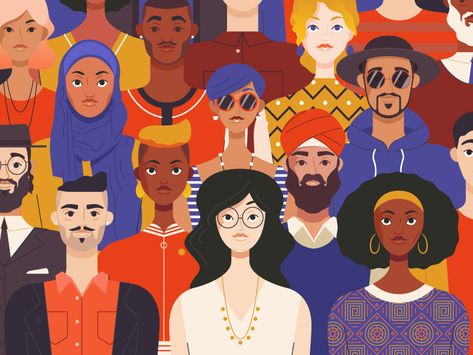Culture and Society: Shaping Identities

Culture and Society: Shaping Identities
Cultural Influence on Identity
Culture refers to the shared beliefs, values, customs, and practices of a particular group. It provides individuals with a sense of belonging and shapes their worldview. Here are some ways in which culture influences identity:
- Language and Communication: Language is a fundamental aspect of culture. It not only enables communication but also shapes the way individuals think and perceive the world. The language we speak influences our identity by shaping our thoughts, expressions, and interactions with others.
- Traditions and Customs: Cultural traditions and customs are passed down from generation to generation. They provide individuals with a sense of heritage and identity. Participating in cultural rituals and celebrations helps individuals connect with their cultural roots and reinforces their sense of belonging.
- Values and Beliefs: Cultural values and beliefs shape individuals’ moral compass and guide their behavior. They influence how individuals perceive right and wrong, what they prioritize, and how they make decisions. These values and beliefs contribute to the formation of personal identities.
- Gender Roles: Culture often assigns specific roles and expectations based on gender. These gender roles influence how individuals perceive themselves and others. They shape behaviors, aspirations, and opportunities, impacting the development of gender identities.

Societal Influence on Identity
Society refers to the larger social structure within which individuals live. It encompasses institutions, norms, and social interactions. Here are some ways in which society influences identity:
- Family and Upbringing: The family is the primary socializing agent, transmitting societal norms and values to individuals. Family dynamics, parenting styles, and cultural practices within the family shape an individual’s sense of self and identity.
- Education and Media: Education and media play a crucial role in shaping identities. Schools and educational institutions transmit societal values, knowledge, and skills. Media, including television, movies, and social media, shape individuals’ perceptions, attitudes, and aspirations.
- Peer Groups and Social Networks: Peer groups and social networks provide individuals with a sense of belonging and influence their behaviors and attitudes. They contribute to the formation of group identities and can shape individual identities through shared experiences, values, and norms.
- Social Institutions: Institutions such as religion, politics, and the economy influence individuals’ identities. They provide frameworks for understanding the world and shape individuals’ roles, responsibilities, and opportunities within society.
The Interplay of Culture and Society:
Culture is a dynamic and multifaceted phenomenon that encompasses the shared beliefs, values, customs, and practices of a group of people. It is not static but evolves over time, influenced by factors such as geography, history, technology, and interactions with other cultures. Society, on the other hand, is the organized structure of human interactions and relationships within a given context, encompassing social institutions, roles, and hierarchies.

Culture Transformation:
Societal changes, such as technological advancements, economic shifts, and demographic shifts, can lead to new cultural expressions and practices. For instance, the rise of social media has transformed how people communicate, socialize, and share information, creating new cultural forms of expression.
Cultural Adaptation:
Societies also adapt to new cultural influences from other communities through processes like assimilation, integration, and cultural exchange. This can lead to the fusion of different cultural traditions and the emergence of new cultural forms that reflect the unique characteristics of the blended culture.
